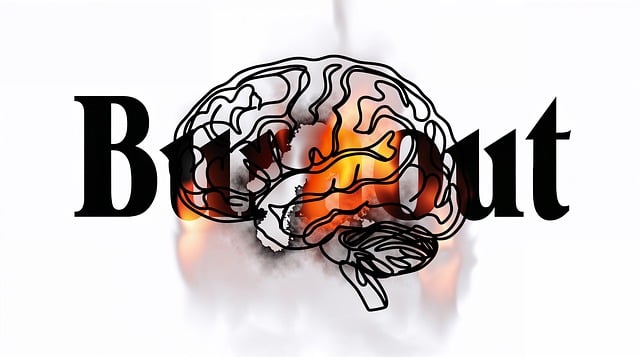In Castle Rock Neuro Disorders Therapy, risk assessment is a core practice combining thorough analysis with personalized care to address complex mental health issues like suicidal ideation and psychosis. Proactive risk management strategies, including mindfulness, self-care, and supervision, mitigate burnout risks for professionals, enhancing well-being and therapeutic outcomes. Regular risk assessments tailored to individual needs create safe environments. Cultural sensitivity training and comprehensive crisis intervention guidance ensure inclusive, ethical care. Case studies and the Mental Wellness Podcast Series provide real-world insights and learning opportunities for therapists.
Mental health professionals are constantly navigating complex situations, making accurate risk assessments crucial. This article delves into the essential practices of risk management in therapy settings, offering a comprehensive guide for practitioners. We explore the nuances of understanding risks, identifying potential hazards, and implementing effective strategies. Through real-world case studies, including insights from Castle Rock Neuro Disorders Therapy, readers gain valuable lessons learned from navigating challenging scenarios, ensuring safer care environments.
- Understanding Risk Assessment in Mental Health Practice
- Identifying Potential Hazards in Therapy Settings
- Strategies for Effective Risk Management
- Case Studies: Learning from Real-World Scenarios at Castle Rock Neuro Disorders Therapy
Understanding Risk Assessment in Mental Health Practice

In the realm of mental health practice, risk assessment is a cornerstone of patient care and safety. It involves a systematic process of identifying, analyzing, and mitigating potential risks associated with an individual’s mental health status and treatment journey. For Castle Rock Neuro Disorders Therapy professionals, this means navigating complex factors such as suicidal ideation, psychotic episodes, or severe anxiety, all while fostering a supportive environment for healing. A comprehensive risk assessment goes beyond simply identifying dangers; it also involves understanding the unique needs and strengths of each client, tailoring interventions accordingly.
By integrating burnout prevention strategies for healthcare providers, such as implementing robust self-care routine development for better mental health, professionals can maintain their own well-being while effectively supporting their patients. Nurturing inner strength development among both practitioners and clients creates a resilient ecosystem that enhances therapeutic outcomes and contributes to a more sustainable practice. These proactive measures ensure not only the safety of vulnerable individuals but also the longevity of dedicated mental health professionals.
Identifying Potential Hazards in Therapy Settings

In therapy settings, identifying potential hazards is a proactive step towards ensuring the well-being of mental health professionals, particularly those specialising in Castle Rock Neuro Disorders Therapy. Beyond the typical challenges of high-stress levels and emotional strain, there are subtler yet significant risks that demand attention. These include excessive workload, lack of supervision, and inadequate boundaries between professional and personal life, all of which can contribute to burnout and impact the quality of care provided. For instance, long hours spent with clients dealing with complex neuro disorders can lead to cognitive fatigue, compromising the therapist’s ability to maintain focus and empathy during sessions.
Integrating mindfulness meditation and self-care practices can serve as a proactive risk mitigation strategy. Regular breaks for mental reset, coupled with resilience-building techniques, empower therapists to manage stress effectively. Additionally, establishing clear boundaries and seeking supervision when needed fosters a supportive environment that enhances overall well-being. By adopting these measures, mental health professionals can navigate the challenges of their role more effectively, ultimately benefitting their clients, including those with neuro disorders, by providing consistent and compassionate care.
Strategies for Effective Risk Management

Mental health professionals must adopt a proactive approach to risk management, especially when dealing with vulnerable populations. Effective strategies involve regular and thorough risk assessments tailored to individual clients’ needs. By identifying potential hazards early on, therapists can implement preventive measures to ensure a safe and supportive therapeutic environment, such as those provided by Castle Rock Neuro Disorders Therapy, which prioritize client well-being.
Cultural sensitivity in mental healthcare practice is a key aspect of risk management. Therapists should be trained to recognize and address cultural factors that might contribute to elevated risks, ensuring inclusive care. Risk management planning for mental health professionals should encompass crisis intervention guidance, enabling practitioners to respond swiftly and appropriately during emergencies while maintaining professionalism and ethical conduct.
Case Studies: Learning from Real-World Scenarios at Castle Rock Neuro Disorders Therapy

At Castle Rock Neuro Disorders Therapy, case studies serve as powerful learning tools, offering insights into real-world scenarios faced by mental health professionals. These detailed accounts highlight complex patient cases, from managing severe trauma to addressing intricate emotional intelligence challenges. Through such studies, therapists can gain a nuanced understanding of various therapeutic approaches and their outcomes.
The Mental Wellness Podcast Series Production at Castle Rock often incorporates these case studies, providing an immersive experience for both practitioners and listeners. By discussing these scenarios openly, the therapy center fosters an environment where professionals can learn from each other’s experiences, enhancing their skills in trauma support services and emotional intelligence application.
Mental health professionals must continually assess and mitigate risks in their practice environments. By understanding potential hazards, implementing robust risk management strategies, and learning from case studies like those at Castle Rock Neuro Disorders Therapy, therapists can create safer settings for both themselves and their clients. This proactive approach ensures the highest standard of care while minimizing professional and patient vulnerability.








